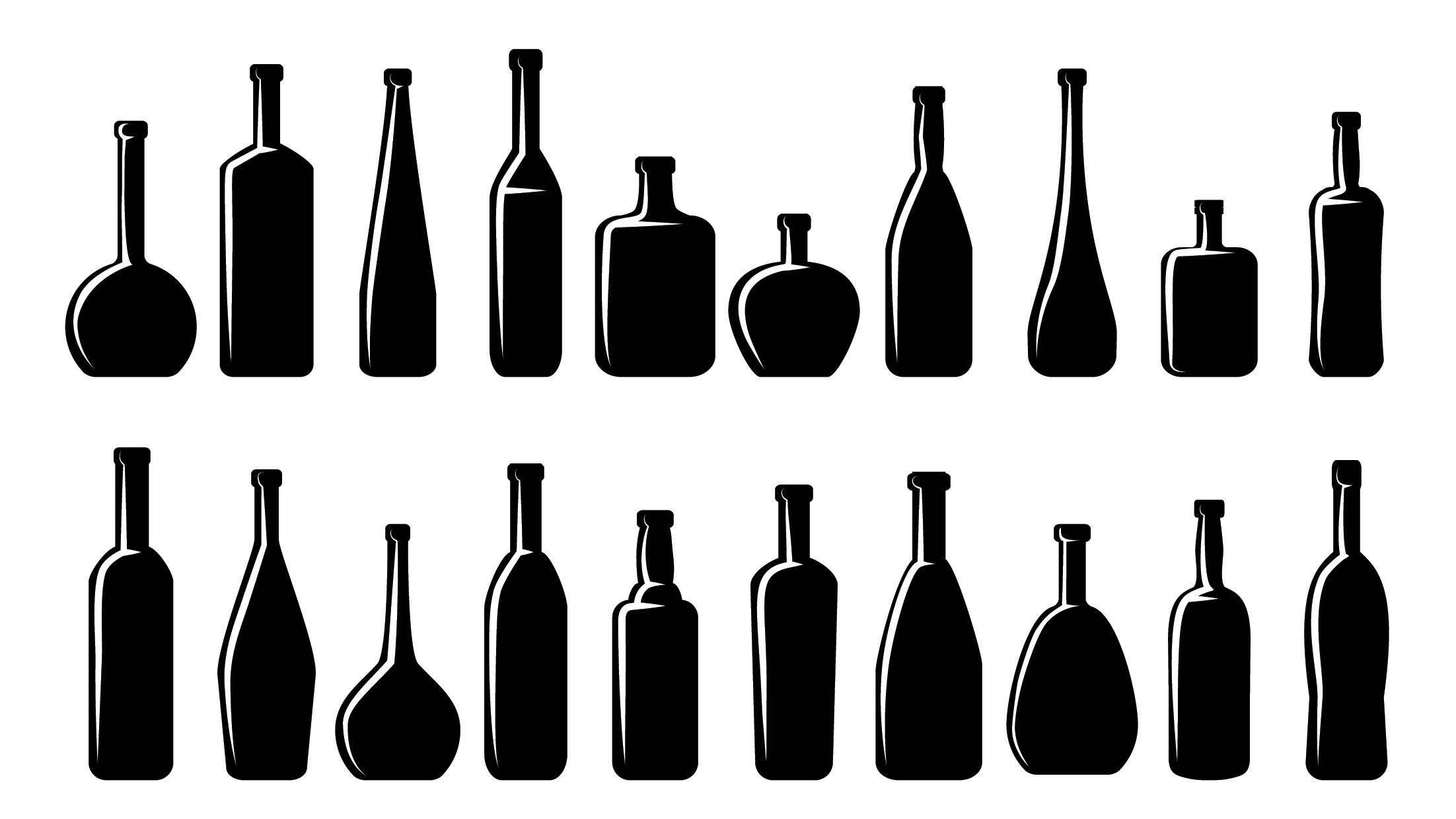Glass bottles and jars are made through a manufacturing process that involves several steps of glassblowing or glass forming. Traditionally done manually by skilled artisans, mass manufacturing uses automated machinery in industrial settings. Here we’ll delve into the methods used to make glass bottles and jars.
Raw Materials
Glass manufacturing is an eco-friendly process using natural raw materials like sand (silica), soda ash (sodium carbonate), and limestone (calcium carbonate). For each batch of glass bottles or jars, these materials are mixed in precise proportions. Other additives like alumina, magnesia, and various metal oxides may be added to the mixture to give the glass certain properties such as color or strength.
The Process
First things first – here are two terms of the trade you’ll come across in the steps that follow:
- A gob refers to a cylinder of melted glass, you can think of it as a blob of glass. A shearing blade cuts off and shapes accurate sizes of molten glass into gobs once it reaches the correct temperature.
- A parison is a partially formed gob or piece of molten glass made at the halfway point of the process that forms a gob into a finished glass jar or bottle.
Step 1: Melting
The batch of glass is fed into a furnace where it is heated to very high temperatures, typically from 2732 °F to 2912 °F (1500 °C to 1600 °C). This extreme heat melts the raw materials to create molten glass.
Step 2: Forming
Once in a molten state, the glass can be formed into bottles or jars using one of two main techniques for automatic glass jar manufacturing.
- Press-and-Blow Process: This process starts with a mold and plunger that are used to shape a part of the body and the neck of the container. A gob is dropped into a blank mold where a plunger presses a dent into the gob. This creates the parison, which is then flipped over and placed into the blow mold. Next, compressed air is forced into the blow mold to get the glass into the final shape. This manufacturing method is typically used for making wide-mouthed glass jars and bottles.
- Blow-and-Blow Process: This technique is preferred for making narrow neck glass bottles. In involves a glassblower or machine that gathers a gob of molten glass on the end of a blowpipe. The glass is then blown into a mold of the desired shape. A separate blow action is used to create the neck of the bottle.
Step 3: Annealing
After completing the forming or shaping process, the glass container is placed in an annealing oven where it is gradually cooled. This controlled cooling process helps with relieving internal stresses within the glass, ensuring a strong finished product that is resistant to breakage.
Step 4: Cutting and Finishing
Once the glass containers are removed from the molds, they may undergo additional processes like trimming and finishing. This is to achieve the desired size, shape, and smoothness, typically used to refine the opening and the neck of the container.
If the glass is to be tempered, this is where that happens.
Step 5: Tempering
Tempered glass is significantly stronger and more resistant to breakage than regular glass. Here's how it's done:
- The glass bottles are placed into the chamber of a tempering oven. The temperature used for tempering is typically around 1112 °F to 1292 °F (600 °C to 700 °C), which heats them to close to the softening point of the glass.
- Once the glass reaches the correct temperature, jets of high-pressure cool air are used to cool them down. This rapid cooling process is known as quenching, responsible for giving tempered glass its unique properties.
- As the glass cools down, the outer surfaces contract and solidify faster than the inner core, creating compressive stresses on the surface. This compression makes tempered glass stronger.
- The inner core remains in a state of tension, counterbalancing the compressive surface stress. This tension increases the glass's resistance to thermal stress and impact.
Step 6: Decorating
Various methods can be used to decorate glass bottles and jars. Techniques used include silk-screen printing, embossing, frosting, and labeling. This is the step that adds branding, product information, and aesthetic appeal to the containers.
Step 7: Quality Control
Quality control measures are taken throughout the manufacturing of glass bottles and containers to ensure that the bottles and jars meet industry standards and customer specifications. However, the final quality control inspections serve to check for imperfections like cracks or bubbles, and other surface defects or residual stresses.
Step 8: Packaging
Once the glass bottles or jars have passed quality control checks, they’re ready to be packaged and prepared for distribution to various industries.
To conclude – glass bottle and jar manufacturing is an intricate and precise process that requires both craftsmanship and technology. The result is a durable, versatile and eco-friendly packaging option with an ability to preserve the contents without affecting taste or quality.
The tempered glass option for bottles is commonly used in applications where durability and safety are paramount, such as in the food and beverage industry. When it comes to bottling juices, for example, tempered glass bottles are the preferred choice because they are significantly more impact and break resistant.


Comment